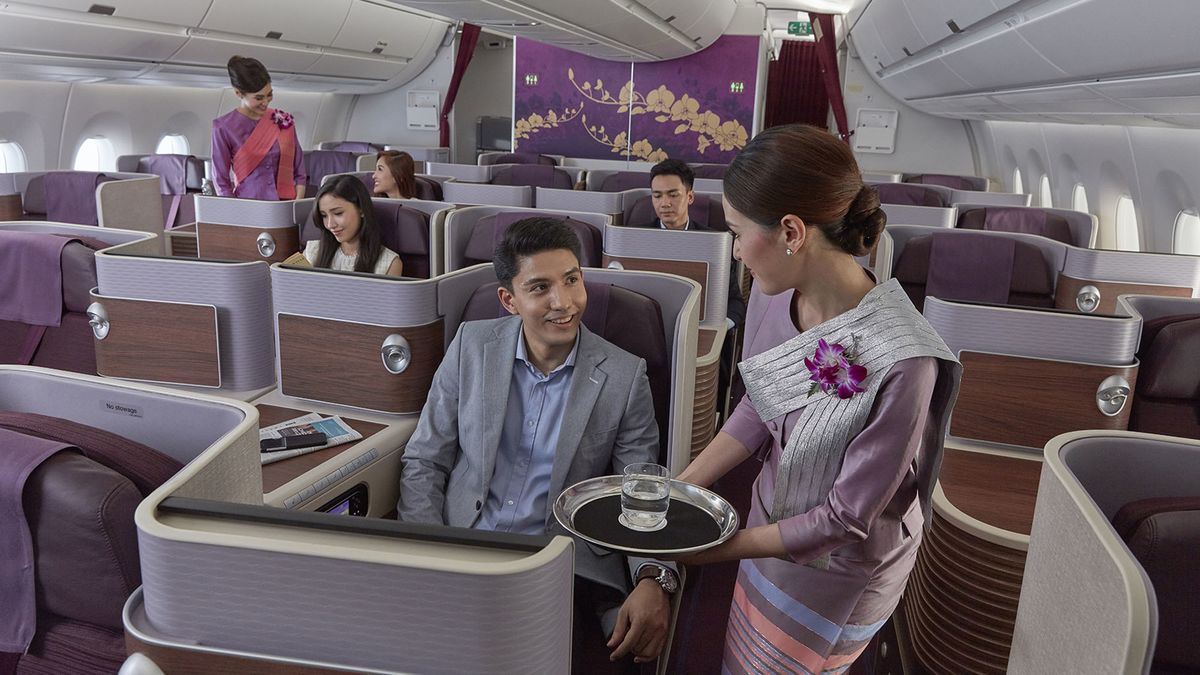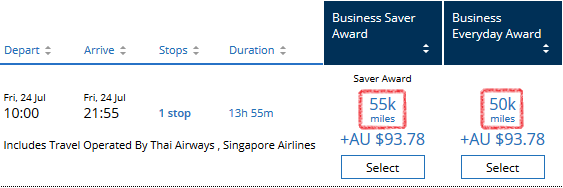United MileagePlus lifts reward rates on Star Alliance flights
Without notice, United's MileagePlus members now need 10% more miles to book many Star Alliance reward flights from Australia.

United Airlines’ MileagePlus members now need to spend 10% more miles to book many flights operated by its Star Alliance partner airlines such as ANA, Singapore Airlines and Thai Airways, covering a range of routes including those to and from Australia.
The changes apply with immediate effect, and the number of miles needed to fly in the future could also be varied again without prior warning, with MileagePlus reward flight bookings on Star Alliance partners now adopting ‘dynamic’ pricing, which United introduced on its own reward flight bookings in late 2019.
Read: United overhauls MileagePlus with dynamic reward pricing
With dynamic pricing in effect, the number of miles needed to book a certain itinerary can change at any time.
This leaves members unsure as to how many miles they need to accrue before having earned enough to book their desired flight – and, for those who’ve already amassed a pile of United miles, creates further uncertainty around how far for those miles can take them, as the new rates that apply today may differ again from those presented later, when making a booking.
As a guide, here’s how many United miles you’ll now need to spend to secure reward flight bookings with United’s Star Alliance partners (as at April 30 2020), and how that compares to the carrier’s previous fixed rates for the same, as had been in place since November 2017.
Star Alliance flights from Australia to Asia
Under United’s previous rewards system, Asia was divided into four categories: Central Asia, North Asia, South Asia, and Japan. The number of miles required was based on the category in which your destination belonged.
With the entry of dynamic reward pricing, some countries which previously shared the same reward rates are no longer paired in the same way.
Again, while the new rates remain subject to change at any time, here’s how many miles you’d need if making a one-way business class booking today, compared to the previous fixed mileage cost:
|
Route |
Previously |
Now |
|
Australia to Hong Kong, Indonesia, Malaysia, Philippines, Singapore, Thailand, Vietnam |
50,000 miles |
50,000-55,000 miles |
|
Australia to Japan |
50,000 miles |
55,000 miles |
|
Australia to Taiwan |
55,000 miles |
55,000 miles |
|
Australia to China |
55,000 miles |
55,000-60,500 miles |
|
Australia to India, Sri Lanka |
70,000 miles |
70,000 miles |
|
Australia to Maldives |
70,000 miles |
77,000 miles |
Notably, direct flights from Australia to China – and those with convenient connections – are currently being charged at 60,500 miles in business class, one-way.
Those with less desirable connections, such those requiring an overnight stay in transit, and where a change of airport is required in the same city (such as flying into Tokyo Narita, and out of Haneda), currently price at the lower rate of 55,000 miles.
Previously, first class reward flight bookings were also popular on United’s partner Thai Airways from Sydney: however, with the airline currently scheduling Boeing 777s to Sydney – which top out at business class, sans the first class cabin of Thai’s Boeing 747s – this reward option is currently unavailable.
ET review: Thai Airways Boeing 747 first class
On some journeys, it also pays to look at both the ‘Business Saver Award’ and ‘Business Everyday Award’ rates. While the Saver Award normally costs fewer miles, the opposite can sometimes be true:
Both provide the same business class travel experience, so choose the one that costs the fewest miles.
While it's possible to book Singapore Airlines business class using United miles (as shown above), this is usually not possible on the airline's flagship Airbus A380, Boeing 777-300ER, and some Airbus A350 flights.
Star Alliance flights from Australia to Canada, Europe, UK
Those jetting further to places like North America, the UK and Europe with United’s partner airlines will also part with more miles in most cases.
Based on the rates United is charging today, here’s how that looks in business class across the board, and in first class, where available.
|
Route |
Cabin |
Previously |
Now |
|
Australia to Canada |
Business class |
90,000 miles |
99,000 miles |
|
Australia to UK |
Business class |
90,000 miles |
99,000 miles |
|
Australia to Europe |
Business class |
90,000 miles |
90,000-99,000 miles |
|
Australia to UK, Europe |
First class |
115,000 miles |
126,500 miles |
While most business class flights from Australia to Europe come in at the higher rate of 99,000 miles, those which are highly inconvenient currently remain at the lower price of 90,000 miles.
For example, a one-way business class booking from Sydney to Paris, which takes the traveller via both Tokyo and Dusseldorf, requires them to change airports in Tokyo and spend the night in Japan, gets the lower rate of 90,000 miles.
However, a similar booking which does not involve an airport change or a lengthy overnight transit attracts the higher price – even if the same two stops are involved.
These rates, as with those to Asia and on all other routes globally, remain subject to change at any time at United’s discretion, without notice, as is the nature of dynamic pricing.
Flying at short notice still costs you more miles
Under the changes introduced to the MileagePlus program in 2019, United began charging travellers an additional 3,500 miles on bookings made for travel within 30 days of departure, over and above the miles they’d normally need for their journey.
This charge remains in place, even after the move to dynamic pricing on Star Alliance reward flights, although now appears to only be levied on bookings made 20 days or less before departure.
For instance, booking a business class flight from Sydney to London previously cost 90,000 United miles year-round. Those booking within 30 days of travel were charged an additional 3,500-mile fee, or a total of 93,500 miles.
Making that same booking 30 days in advance under the new system would still cost more miles than before – 99,000 miles, even without the extra 3,500-mile fee – while those booking 20 days or less before departure would be charged both the higher base rate and that fee: 102,500 miles in total, on a one-way Sydney-London booking.
United’s SkyTeam rival Delta has long used dynamic pricing for its SkyMiles rewards program, although Oneworld member American Airlines continues to price reward flights at fixed costs, giving travellers more certainty when earning miles and making plans to spend them.
Also read: United drops all Australian flights except Sydney-SFO

04 Dec 2017
Total posts 68
After flying United once I'm not sure why anyone from Australia would choose them over Qantas. I'd rather fly via Japan or Hong Kong and spend a night than direct with United. Bland, dry and nothing worthy of note.
Virgin Australia - Velocity Rewards
27 Sep 2017
Total posts 31
It makes you wonder why on Earth anyone would then bother accruing the miles given the unpredictability of redemption rates. If such is the case that dynamic pricing is implemented, I would dare then to challenge that point of view and also apply dynamic accrual based on the value of the fare spent.
For example, Virgin Australia has a fantastic way of accruing miles by the way of the amount spent on domestic travel. Shame they do not do that on International travel. That way you even out the ledger.
Hi Guest, join in the discussion on United MileagePlus lifts reward rates on Star Alliance flights